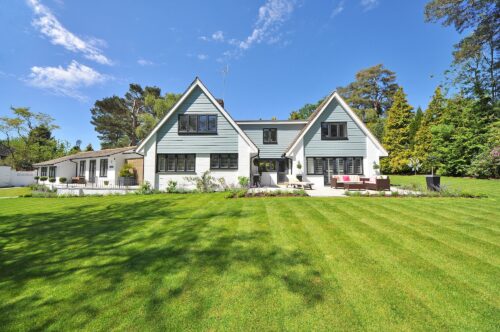Summer is here and you don’t want to be the only one on the block with a yellow lawn, right? Right. Now, the question is: which lawn watering tips are actually going to be helpful in keeping your lawn green, healthy and lush this time of year?
NASA kind of answered that question. One of their studies revealed that there are approximately 63,000 square miles of lawns of different varieties and conditions in the United States. Based on the above, Matt Maurer, owner of PureLawn and an expert on the subject, said, “Every lawn has a different soil, and it must be watered according to its specific needs.”
It is a reality that summer heat can drastically affect lawns. High temperatures and regional droughts constantly threaten to damage the grass, and can also attract diseases and pests. So, when it comes to watering your lawn during the hot summer months, it’s important to note that improper techniques can harm you more than they can help you.
Watering excessively at inappropriate times of the day and too often, for example, can be ineffective and even harmful. Don’t worry, though! We’re here to help walk you through our tip lawn watering tips for summer to help you keep your lawn looking healthy all the way into fall.
Lawn Watering Tips for Hot Summer Months
It’s completely normal and expected that the hot and dry weather of summer, combined with other regional factors, will cause your lawn to lose its vital and healthy appearance. Knowing when to water your lawn during the summer and understanding a few other summer lawn watering tips can help you beat the brown and ensure your grass is green all season long. Here’s how.
1. How often should you water your lawn during the summer?
During summer months, it’s recommended to water your lawn with one inch of water, once a week, preferably between 6 and 10 am. However, when the hottest days of the year roll around (think scorching July and August days in most parts of the country), you can water as frequently as every four to five days depending on your local watering guidelines.
Avoid watering your lawn in the afternoon during especially hot days as most of the water will evaporate due to warmer temperatures. Likewise, you should avoid watering your lawn at night. When you do so, you risk having the lawn stay wet for up to 12 to 15 hours. This prolonged period of humidity can lead to fungal diseases (which you definitely don’t want).
2. Should you water your lawn if it’s already wet?
By allowing your lawn’s soil to dry out between waterings, you’re more easily able to kill off any existing pathogenic fungi and insect eggs.
Letting the soil dry also makes it easier for the roots to grow deeper into the ground. This helps your grass grow a little bit more resistant and tolerant to drought and also helps the roots grow stronger to withstand colder winter temperatures towards the end of the year.
3. Should you water your lawn when it’s brown?
No! You should be watering your lawn before it darkens as waiting until it’s already brown or dried out can cause premature wilting to occur.
While most homeowners simply look at the color of their lawn to determine the overall health of their grass, wilting is a strong sign that it’s in need of a deep watering. Wilting mixed with brown blades of grass are both indicators that your lawn could be suffering from drought damage and is in need of a good watering.
4. How short should you cut your grass in the summer?
Okay, so this isn’t necessarily a lawn watering tip, but the height of your lawn will affect how efficient your watering efforts are. This is why it’s critical to set your mower blade to an additional, higher level from where you normally would.
When you opt for a higher cut, it creates a thicker canopy of blades that shade the ground and protect the growth points of the grass plants.
5. How long should you leave your sprinklers on during the summer?
Each sprinkler system comes with different sprinkler types and each home has varying degrees of water pressure, meaning that you’ll need to take your irrigation system into account when determining the amount of time required to give your lawn the correct amount of water.
Try placing a container under your sprinkler and measuring the time it takes to collect one inch of water. This will help you determine how long you need to leave your sprinkler system on to water your lawn correctly.
If you’re having issues with low water pressure or cracked pipes, we suggest trying an irrigation cement that will help seal things off for you.
Enjoy a Spectacular Summer Lawn
At the end of the day, what’s important to remember is that not properly watering your lawn during the hot summer months could mean that in the coming days leading into fall, you’re going to have to spend a lot more time correcting your summer mistakes!
Instead, simply follow our lawn watering tips and help your lawn thrive all throughout the season (and the rest of the year, too).
About Weld-On
Weld-On Adhesives, Inc., a subsidiary of IPS Corporation, is the pioneer and leading manufacturer of Weld-On® solvent cements, primers and cleaners for PVC, CPVC, ABS and other plastic piping systems. Weld-On products are globally recognized as the premium products for joining plastic pipes and fittings. Headquartered in California, Weld-On has state-of-the-art operations throughout the United States, as well as China, and a worldwide network of sales representatives and distributors.

